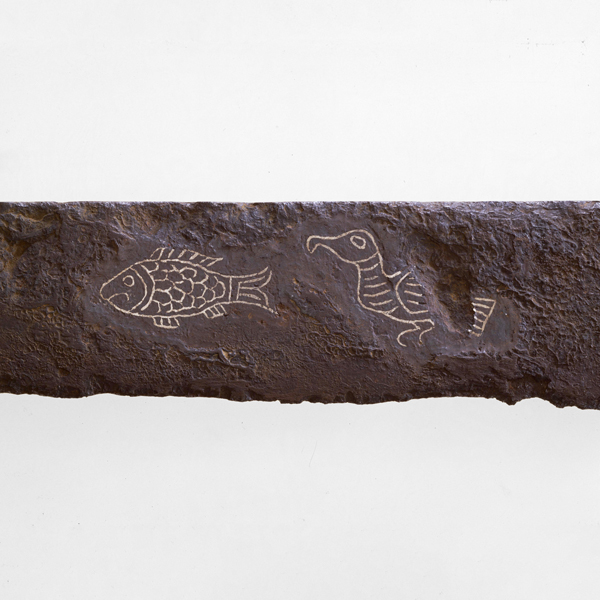刻铭大刀与古坟时代的社会
-

国宝 错银铭文大刀 (局部)
熊本县和水町江田船山古坟出土 古坟时代 5-6世纪平成馆 日本考古文物展室
2024年6月25日(星期二) ~ 2024年12月22日(星期日)熊本县江田船山古坟出土的错银铭大刀制作于五世纪,其刀身镌刻着铭文和鸟、鱼、马等图案。它作为传达当时政治、社会、世界观的文字材料,是日本古代史上的一级史料。此处以独立的展览空间和专用展柜展出这把大刀,并配置了各种说明牌,供您仔细观察和了解其铭文与纹饰。此外,五世纪最具代表性的人物像之一的石人也在展出之列。
| 指定 | 名称 | 数量 | 作者、出土、传入 | 时代、年代世纪 | 收藏者、捐赠者、展品编号 | 备注 | |
| 推荐 | 重要文化财 | 石人 | 福冈县八女市岩户山古坟出土 | 古坟时代 6世纪 | J-831 | ||
| 推荐 | 国宝 | 错银铭文大刀 | 熊本县和水町江田船山古坟出土 | 古坟时代 5-6世纪 | J-573 |
